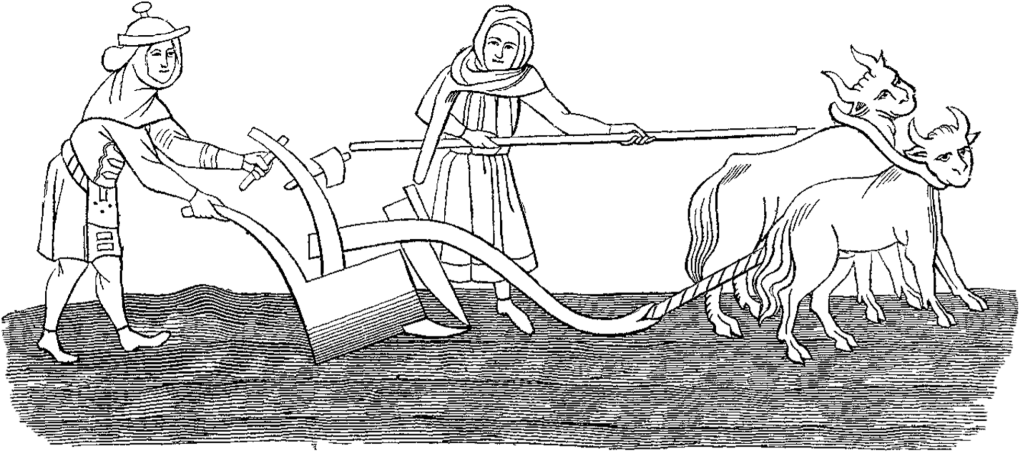In his treatise on the writing of letters, the De Conscribendis epistolis,[1] Dutch humanist and prolific letter-writer Desiderius Erasmus emphasizes the importance of the opening section of the letter. Going wrong here in the salutatio, the writer will, he says,“…like a poor helmsman…run aground right in the harbour.”[2] His advice is to keep things simple, adopting the “new” Ciceronian style:
I approve the simplicity of the ancients; I only wish that we could emulate it everywhere amid the corrupt practices of our age, so that we might greet one another by the mere mention of names, as in: ‘Pliny gives his Calvus greeting!’ What could be truer or simpler? When you hear a man’s name pronounced you hear all his good qualities in a nutshell.[3]
Here and throughout his treatise, Erasmus makes a point of attacking the “corrupt practices of our age,” that is to say, medieval dictaminal practice. Erasmus’ friend and correspondent, the younger scholar Juan Luis Vives, who wrote a De Conscribendis Epistolis of his own, agrees that in medieval practice the use of epithets had spiraled out of control. Vives suggests that they should instead be employed as sparingly as possible, their use restricted to legitimate titles derived from the office of the addressee: “senator, consul, quaestor, bishop, priest, curate.”[4] He underscores the fact that a badly placed epithet might tarnish honor instead of enhancing it, suggesting that a name like Erasmus of Rotterdam carries its own distinction with no need for titles:
Other titles, originating from a debased custom, produce laughter or annoyance rather than confer distinction. Is it not more flattering to be so highly thought of that there is no need of epithets, as in the case of Guillaume Bude, Erasmus of Rotterdam, or Thomas More? In the lustre of such names expressions like “most learned in both tongues,” “consummate theologian,” “gentleman of greatest renown” are superfluous.[5]

Erasmus ostensibly agrees, directly criticizing the customary pleonastic manner of addressing royals and nobles:
The king of the French alone is called “most Christian,” the king of Spain alone “Catholic,” the king of England “most serene,” the emperor alone “ever august,” dukes “most illustrious,” other members of the lesser nobility “illustrious,” and others “most noble.” Who introduced this superstition about titles into the world? … By the constant repetition of phrases like “most reverend lordships,” “Catholic majesties,” and “magnificent fatherhoods” we fill up a large part of a letter, and ruin the gracefulness of the Latin tongue. I pardon those who use them against their will; I do not pardon those who devise them, or who insist upon them as a serious matter.[6]
Despite this ideal, as with so many rules and regulations meant to govern the rules of prose, humanistic or otherwise, theory does not always accord with practice. Vives certainly uses flattering epithets in his own letters, despite his counsel to the contrary.[7] But although Erasmus begins by praising the “mere mention of names,” in practice his treatise goes on to linger on the salutatio for nearly a dozen sections, recommending the use of essential titles and the use of an apt—but not sycophantic—epithet (he suggests over 100 as suitable).[8]
Moreover, for the 1515 dedication to his Senecae Lucubrationes, Erasmus composes a salutation that hardly appears to follow his own advice: “To the most distinguished Father D. Thomas Ruthall,” he writes, “Bishop of Durham, Secretary of State of the Most Serene King of Britain, Erasmus of Roterdam sends greeting.[9] Though he does give himself merely his two names Erasmus Roterodamus, he is not content to give his friend Ruthall the single epithet amplissimo—he goes on to add his titles as well as those of Ruthall’s master, the “Most Serene King of Britain.” Leaving aside the elevated diction Secretarius Magnus and the choice of Britanniae instead of Angliae, Erasmus appears to fall right into the very “superstition about titles” he criticized above: calling the king of England “most serene.” As Erasmus cannot be imagined to here use epithets “against [his] will, in our charity we must conclude that he simply does not “insist upon them as a serious matter.” Indeed, we might imagine this apparent “do as I say, not as I do” as part of a game among friends. A glance at the letters of another friend of Erasmus, fellow correspondent Sir Thomas More, reveals that More uses titles only rarely in his salutations—rare exceptions include the high-flung salutation of Henry (that same most serene king of Britain) as Britanniae Galliaeque Regi and a 1506 letter addressed to Regio apud Anglos Secretario, our very own Thomas Ruthall. In the year 1506, Erasmus was staying in More’s house at Bucklersbury, and the two were engaged in the translation of Lucian’s dialogues. More’s almost overly learned letter to Ruthall offers some “first fruits” of these Greek studies. More and Erasmus engage here in a game of language and words, breaking their own rules, offering their efforts to a mutual humanist friend they knew would delight in their linguistic play.
Despite living the most fruitful parts of his adult career after the conclusion of what is generally considered the medieval period, Desiderius Erasmus never really attempted to avoid or evade the Middle Ages. Both in his return to the Classics and his agitations for a new humanistic approach to writing and scholarship, Erasmus continues to engage with medieval thinkers and medieval ways of thinking. In responding to and helping drive the dramatic shift away from the centuries-old medieval dictaminal tradition designed for the mass production of documents essential to the court of every Christian kingdom to a humanistic model grown out of the fourteenth-century Renaissance and Francesco Petrarcha’s rediscovery of the personal letters of Cicero to his friend Atticus, Erasmus engages in a humanistic game that plays off of tension with the near medieval past.
Rebecca West, PhD
Literature Core Faculty
University of Dallas
[1] Erasmus was already writing an early version of this text for his student Robert Fisher by about 1498 (Epistularum scribendarum ratio). A pirated version of his treatise was published at Oxford in 1521 by Siberch, more or less forcing Erasmus to come out with an expanded, corrected official version in 1522. The standard edition of the treatise is Charles Fantazzi, ed., “On the Writing of Letters / De Conscribendis Epistolis,” in The Collected Works of Erasmus: Literary and Educational Writings, 3 and 4, by J. K. Sowards, ed., 25 (University of Toronto Press, 1985). Hereafter abbreviated as CWE 25/3.
[2] CWE 25/3:50. The ars dictaminis aimed at organizing the letter—a form largely meant for public declamation of official communications—according to standardized models following a set of rules derived from ancient Ciceronian oratory. Erasmus devotes significant portions of his treatise to the proper way to frame the opening of a letter, the portion corresponding to the salutatio and captatio benevolentiae of a letter written according to the terminology of the medieval dictaminalmodel.
[3] CWE 25/3:51
[4] Charles Fantazzi, ed., J.L. Vives: De Conscribendis Epistolis: Critical Edition with Introduction, Translation and Annotation, trans. Charles Fantazzi (Leiden: Brill, 1989), 47.
[5] Vives: De Conscribendis Epistolis, 47.
[6] CWE 25/3:61.
[7] See the introduction to Fantazzi’s edition for the use of flattering epithets in Vives’ own corpus of letters.
[8] CWE 25/3:50-62.
[9] Amplissimo patri D. Thomae Ruthallo Episcopo Dunelmensi Serenissimi Britanniae Regis Secretario Magno Erasmus Roterodamus S. D. Text from Elizabeth Frances Rogers, ed., The Correspondence of Sir Thomas More, (Princeton: University Press, 1947), letter 5.Translation from Clarence H. Miller, Leicester Bradner, Charles A. Lynch, and Revilo P. Oliver, eds., The Complete Works of St. Thomas More, Volume 3, Part II (New Haven: Yale University Press, 1984), 1:2–8.



